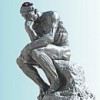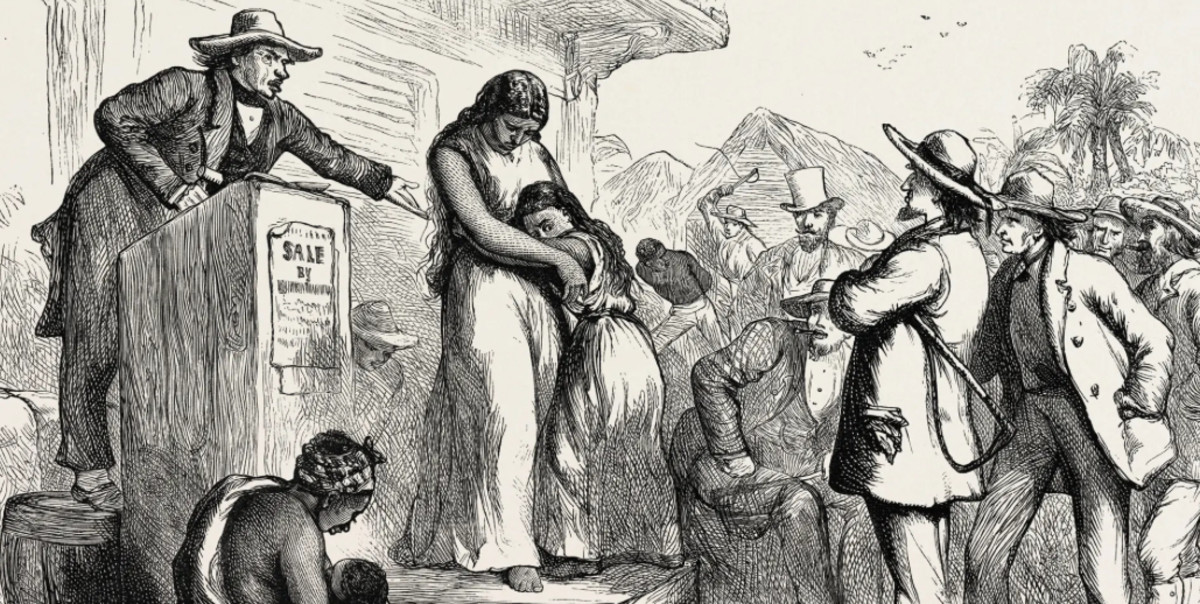The Bible in Facts and Figures

What do you Know about the Bible?
The Old Testament contains 592,493 words, 23,214 verses, 929 chapters, and 39 books. The New Testament contains 181,253 words, 7,959 verses, 260 chapters and 27 books. The total for Old and New Testament, 773,746 words, 31,173 verses, 1,189 chapters and 66 books. But do you know when it was written and by who?
The Holy Bible is the most influential and most popular book in history,it is first of all a religious book but also it is a work of literature, it is a work of history, it contains religious and secular laws, advice, poetry, it is a source of inspiration, it contains prophesies, recipes, marital advice, in fact it could be considered a sort of ancient Wikipedia. It has been studied for thousands of years and yet much still remains to be known.
The Bible has been and still is being studied by the greatest scholars from both religious and secular view points; the Dead Sea Scrolls , Archaeological Research in the Holy Lands, Modern Textual Style Analysis, Computer Analysis are still illuminating different aspects of the world's "greatest book".
The Bible still thus appears in the News
Bible Facts & Figures & Curiosities - (Please send me your own facts/statistics)
- First word in the Bible: 'In', as part of the sentence 'In the beginning, God created the heaven and the earth.'
- Last Word in the Old testament it is the word "CURSE" . In the New testament it is the word "AMEN"
- Most Common Words "and"
Most Common Nouns Lord 7970 times,God 4094 times,Man 3323 times,King 2504 times,Sin 1016 times
- Words: There are 788,258 words in the King James Bible. Of these, 14,565 are unique
- Biblical hermeneutics is the study of the principles of interpretation concerning the books of the Bible
- Shortest Verse Jesus wept.
- Middle of the bible The middle verse of the Bible is the 8th verse of the 118th Psalm.
- Best Reading The finest piece of reading is the 26th chapter of Acts.
- The number 40 holds particular significance in the Bible and refers to a precise number, not just a long period of time. There are at least ten instances in the Old Testament and New Testament where 40 occurs, either in years or days, e.g. it rained for 40 days and 40 nights, Moses was on the mountain 40 days and 40 nights, the Israelites wandered 40 years, Jesus fasted in the wilderness for 40 days and was seen on the earth for 40 days after His crucifixion.
- Bibles Sold 2.5 Billion to 6 Billion
- Bible translations have been made into 2,454 languages, with various portions of the Bible in 848 languages, one of the two Testaments in 1,168 languages, and the full Bible in 438 languages
- Time to Read The Bible can be read aloud in 70 hours.
- Chapters System The system of chapters was introduced in A.D. 1238 by Cardinal Hugo de S. Caro
- Verses System verse notations were introduced in 1551 by Robertus
Stephanus
- Longest name Mahershalalhashbaz (Isaiah 8:1)
- Meaning of Bible The word Bible comes form the Greek word biblia and means "book."
- Scrolls Old Testament books were scrolls, a strip of animal skin that was rolled up on two sticks. One ancient copy of the book of Isaiah is twenty-four feet long. 1
- Memorize the Bible Thomas Cranmer (1489-1556), Archbishop of Canterbury, reportedly memorized the entire Bible! Some historians record that it took him only three months to accomplish this amazing feat!
- First American Bible
The first Bible printed in America was done in the native Algonquin Indian Language by John Eliot in 1663
- No description of Jesus
The Bible apparently contains no description of the physical appearance of Jesus
- Chronology of the Old Testament
It is estimated that the chronology of the Old Testament covers more than 1500 years, from approximately 2000 b.c. to 400 b.c
- Oldest Bibles
Syriac Sinaiticis 330-360. Codex Vaticanus . They are written in Greek and have the Short Ending of Mark. There are few gaps between the words.
- There are no dates in the Bible
As far as I know there are no dates instead you get in the third year of the reign of this or that King. You also get a King reigned for 40 years which just means a long time.
Who Wrote the Bible - (Many quotes from Wikipedia)
This is meant to be a brief overview, it is quite easy to conduct your own research
- Torah/Pentateuch
Traditional The first five books of the bible, Genesis, Exodus, Leviticus, Numbers and Deuteronomy, are known by Jews as the Torah are traditionally supposed to have been written by Moses.
Modern There is no single consensus among secular biblical scholars as to just who wrote the Torah and when. The most generally accepted theory, the documentary hypothesis, identifies four discrete components of the text, written and edited from c 950 BC to c 400 BC
- The Prophets
The next group of books Joshua, Judges, Samuel, and Kings - are history books, telling the story of the Israelite people from the conquest of Canaan to the fall of Jerusalem, and stressing a religious interpretation of historical and military events.
Prophets concludes with the Major Prophets Isaiah, Jeremiah and Ezekiel , followed by the twelve Minor Prophets.
There are appear to be no major divergences between the traditionalist and scholarly views.
- Writings/Kethuvim The final section of the Hebrew bible, taking in all the remaining books, is the "Writings" (Kethuvim)
This division is the least unified part of the Bible, representing a wide variety of post-Exile views, including wisdom literature, poetry, and festival scrolls. The traditional authorship of many is reflected in the titles: Ezra, Nehemiah, Daniel, etc. The unnamed books are ascribed to various famous figures: King David is the traditional author of Psalms; Solomon of Proverbs, Ecclesiastes, and the Song of Songs; Moses of the Book of Job; and Lamentations to Jeremiah.Modern biblical scholars hold all these books to be fairly late compositions by anonymous and authors with deliberately falsified names.
Some Books Examining the Bible
Different Bibles for Different Religions - Some religions/bibles include extra books
The biblical apocrypha are books published in an edition of the Bible whose canonicity the publisher either rejects or doubts. For this reason they are typically printed in a third section of the Bible apart from the Old and New Testaments or even omitted entirely.
Council of Nicea 325AD - Synod of Carthage 397AD
The First Council of Nicea was held in Nicea in Bithynia (in present-day Turkey) in 325. The Roman Emperor Constantine I called the bishops of the Roman Empire to the first ecumenical conference of the early Christian Church. It had as most important result the first uniform Christian doctrine, called the Nicene Creed.
Traditionally it was here that the final version of the Bible was decided in fact the Bible contents had been stabilized long before this. In 397 AD, in an effort to protect the scriptures from various heresies and offshoot religious movements, the current 27 books of the New Testament were formally and finally confirmed and "canonized" in the Synod of Carthage.
The Council of Carthage, on 28 August 397 issued a canon of the Bible restricted to: Genesis, Exodus, Leviticus, Numbers, Deuteronomy, Josue, Judges, Ruth, 4 books of Kingdoms, 2 books of Paralipomenon, Job, Psalter of David, 5 books of Solomon, 12 books of Prophets, Isaias, Jeremias, Daniel, Ezechiel, Tobias, Judith, Esther, 2 books of Esdras, 2 books of Machabees, and in the New Testament: 4 books of Gospels, 1 book of Acts of the Apostles, 13 letters of the Apostle Paul, 1 of him to the Hebrews, 2 of Peter, 3 of John, 1 of James, 1 of Jude, and the Apocalypse of John.
Must debate and rumor has continued ever since as to what had been omitted including the so-called gnostic texts
Bibilical Links - How to link to verses of The Bible
- KING JAMES BIBLE ONLINE
Searchable Bible - BibleGateway.com: A searchable online Bible in over 100 versions and 50 languages.
Link to any Biblical Passage:- http://www.biblegateway.com/passage/?search=Psalm+119 or http://www.biblegateway.com/passage/?search=Genesis+1 or more exactly http://www.biblegateway.com/passage/?search=Genesis+1:3 (3rd verse)
The Bible as Historical Book
Many Biblical References have been confirmed by Archeology
The Hittites were until the 20th century believed to be mythical. Recent archeology has confirmed their existence. On the other hand Jerusalem appears to have been no more than a village during the reigns of Kind David and King Salomon. The main problem in using the Bible as a historical source is the the inexactness of any dates.
Everyday Expressions which Come from the Bible
There are very many on these, I list here just a few but will choose some that might surprise you.
Imagine how many future authors were brought up in houses where the only book was the Bible, where they would learn to read from the Bible. The Kings James Bible (KJV) is considered a literary masterpiece.
- Spare the rod, spoil the child
Prov 13:24 He who spares the rod hates his son, but he who loves him is careful to discipline him.
- By the sweat of your brow
Gen 3:17, 19 To Adam he said, "Because you listened to your wife and ate from the tree about which I commanded you, 'You must not eat of it,' "Cursed is the ground because of you; through painful toil you will eat of it all the days of your life. ... By the sweat of your brow you will eat your food until you return to the ground, since from it you were taken; for dust you are and to dust you will return.
- It is better to give than to receive
Acts. 20:35 35 In everything I showed you that by working hard in this manner you must help the weak and remember the words of the Lord Jesus, that He Himself said, 'It is more blessed to give than to receive.
- A leopard cannot change its spots
Jer. 13:23 23 Can the Ethiopian change his skin Or the leopard his spots? Then you also can do good Who are accustomed to doing evil
- The Love of money is the root of all evil
Tim. 6:10 10 For the love of money is a root of all sorts of evil, and some by longing for it have wandered away from the faith and pierced themselves with many griefs.
- Nothing new under the sun
Ecc. 1:9 9 That which has been is that which will be, And that which has been done is that which will be done. So there is nothing new under the sun
- Let him who is without sin cast the first stone
John 8:7 7 But when they persisted in asking Him, He straightened up, and said to them, He who is without sin among you, let him be the first to throw a stone at her.
(This is a beautiful one)
- Fly in the ointment
Ecc. 10:1 1 Dead flies make a perfumer's oil stink, so a little foolishness is weightier than wisdom and honor
- Salt of the earth
Matt. 5:13 13 You are the salt of the earth; but if the salt has become tasteless, how can it be made salty again? It is no longer good for anything, except to be thrown out and trampled underfoot by men.
Catholic and Protestant Bible Differences
Bible translations developed for Catholic use are complete Bibles. This means that they contain the entire canonical text identified by Pope Damasus and the Synod of Rome (382) and the local Councils of Hippo (393) and Carthage (397), contained in St. Jerome's Latin Vulgate translation (420), and decreed infallibly by the Ecumenical Council of Trent (1570). This canonical text contains the same 27 NT Testament books which Protestant versions contain, but 46 Old Testament books, instead of 39. These 7 books, and parts of 2 others, are called Deuterocanonical by Catholics (2nd canon) and Apocrypha (false writings) by Protestants, who dropped them at the time of the Reformation. The Deuterocanonical texts are Tobias (Tobit), Judith, Baruch, Ecclesiasticus (Sirach), Wisdom, First and Second Maccabees and parts of Esther and Daniel. Some Protestant Bibles include the "Apocrypha" as pious reading.
Bible Mystery The Q document
The Q document or Q (from the German Quelle, "source") is a postulated lost textual source for the Gospel of Matthew and Gospel of Luke. It is a theoretical collection of Jesus' sayings, written in Greek. Although many scholars believe that "Q" was a real document, no actual document or fragment has been found.
Strange Passages in the Bible
- God wrestled with Jacob, Jacob wrestled with a stranger all night, this stranger turned out to be God Genesis 32:24-32
Bible Recipes
Take wheat and barley, beans and lentils, millet and spelt; put them in a storage jar and use them to make bread for yourself. You are to eat it during the 390 days you lie on your side. Ezekiel 4:9
And from fine wheat flour, without yeast, make bread, and cakes mixed with oil, and wafers spread with oil Exodus 29:2
When David came to Mahanaim, Shobi son of Nahash from Rabbah of the Ammonites, and Makir son of Ammiel from Lo Debar, and Barzillai the Gileadite from Rogelim brought bedding and bowls and articles of pottery. They also brought wheat and barley, flour and roasted grain, beans and lentils, honey and curds, sheep, and cheese from cows' milk for David and his people to eat. For they said, "The people have become hungry and tired and thirsty in the desert. 2 Samuel 17
Curious Bible Facts
This section has proved rather more difficult to create then I managed as many of the alleged facts are disputed, wrong or mistranslated
- Eating Seafood is forbidden (before refrigeration eating seafood was dangerous)
- Turning Water into Wine : Jesus's miracle at Canaan of turning water into wine has helped preserve drinking alcohol in Christian countries
- You should not wear Linen and Wool at the same time, Thou shalt not wear a garment of divers sorts, as of woollen and linen together
- Thou shalt not plow with an ox and an ass together
Biblical Value of Pi is Three - Biblical Errancy?
In the description of Solomon's Palace, specifically in the verse I Kings 7:23, the Bible gives the dimensions of a round "molten sea", which is an immense round basin of cast metal
And he made a molten sea, ten cubits from the one brim to the other: it was round all about, and his height was five cubits: and a line of thirty cubits did compass it about.
This equates to a value of 3 for Pi. This is often used as an example of biblical errancy however I think that's unfair, the verse was not meant to a mathematical treatise and I guess a value of 3 was accurate enough for a layman.
Bible Concordance - A Bible concordance is a verbal index to the Bible. A simple form lists Biblical words alphabetically, with indications to enable the inquir
The most famous Concordance in English is Cruden's Concordance, it is a concordance of the King James Bible that was singlehandedly created by Alexander Cruden. It was first published in 1737 and has not been out of print since then. He had lunch with my 4 times Great Grandfather.
Biblical Numbers
Gematria is a system of assigning numerical value to an alphabet
- 40 : Seems to represent a handy large number in the Bible, eg Forty days Jesus was tempted of the Devil, 40 days of floods
- 7 Seven years of Plague, seven days of the week,
The Bible Code
The Bible code is a cipher alleged to exist within the texts, that when decoded form words and phrases supposedly demonstrating foreknowledge and prophecy. The study and results from this cipher have been popularized by the book The Bible Code.
Computers are used to find hidden texts by analyzing every nth word in a similar fashion to acrostics. The Bible Code and many similar studies remain controversial.
The Crime of Translating the Bible into English
The first hand-written English language Bible manuscripts were produced in the 1380's AD by John Wycliffe, an Oxford professor and theologian. Wycliffe with the help of his followers, called the Lollards, and his assistant Purvey, and many other faithful scribes, Wycliffe produced dozens of English language manuscript copies of the scriptures. They were translated out of the Latin Vulgate, which was the only source text available to Wycliffe. The Pope was so infuriated by his teachings and his translation of the Bible into English, that 44 years after Wycliffe had died, he ordered the bones to be dug-up, crushed, and scattered in the river. I am distantly related to Wycliffe, my ancestors changed their name to Weekly to avoid persecution.
A subsequent translator Tyndale was strangled and burned at the stake in 1536.
The authorities opposed the translation of the Bible because they feared loss of power but also because they thought that ordinary people would not be able to cope with the apparent contradictions. They also feared they would make their own interpretations, this has of course actually happened.
The history of the Bible is fascinating and can only be touched on here.
Biblical Timeline
These dates are often interpolated
- 4 BC Birth of Jesus
- 26 AD John the Baptist begins ministry
- 27 AD Jesus begins ministry
- 30 AD Crucifixion of Jesus (after 1 or 3 years of ministry)
- 35 Conversion of Paul
- 68 Martyrdom of Paul
- 202 Christians persecuted (alternating periods of toleration and persecution)
- 325 Council of Nicea under Constantine
- 380 Christianity made official religion of Roman Empire
- 1517 Luther posts 95 Theses (Protestantism)
Facts We Don't Know About The Bible
The exact date/year of birth of Jesus
The exact date/year of death of Jesus
Who his sisters were
Most of Jesus what did in his early life.
Jesus left behind no writing, was he literate? At the time much learning was oral
Who exactly were Matthew, Mark, Luke and John
Very few contemporary historical references to Jesus.
What did he look like?
What did he do between the ages of 12 and 30?
Much of the above is disputed of course and of course we have similar problems with the much more recent Shakespeare.
The Mystery of Jesus's Missing 18 Years - Bible Mysteries
There is no mention in the Bible to what Jesus did between the ages of 12 when he was discussing religious matters with the elders and 30 or so when he appeared as a prophet, this is a recognized fact. All we know is that when Jesus came to preach in his hometown Nazareth that while the people were not exactly welcoming they were amazed by the change, surely that is just Joseph the Carpenter's son but how come he has all this knowledge? Jesus wryly remarked that "The only place a prophet isn't honored is in his hometown and in his own house".
So what happened in between we shall probably never know but there are wild theories ranging from going to India, to England (William Blake : And did those feet in ancient time, Walk upon England's mountains green: And was the holy Lamb of God, On England's pleasant pastures seen), to even North America!
Bible Mystery : Who Added Mark 16:9-20?
The current consensus among scholars is that verses 16:9–20 were not part of the original text of Mark but represent a very early addition. These verses describe much of Jesus's activity after the resurrection. These verses do not appear in the very earliest copies of the New Testament Sinaiticus and Vaticanus.
The Vulgate Bible
Latin Bible for the Catholic Church
The Vulgate is an early 5th-century Latin version of the Bible, largely the result of the labors of Jerome, who was commissioned by Pope Damasus I in 382 to make a revision of old Latin translations. It became the definitive and officially promulgated Latin version of the Bible of the Roman Catholic Church. In the 13th century it came to be called versio vulgata, which means "a commonly used translation". There are 76 books in the Clementine edition of the Vulgate Bible: 46 in the Old Testament, 27 in the New Testament, and three in the Apocrypha.
Ref Wikipedia

Jahwist and Elohist/Eloist Interpretations of the Old Testament
Which help explain the "Doublets" or doubled texts
A well known doublet is where Noah saves 2 or each animal or 7 of each animal according to different passages of the Old Testament this is allegedly due to the merging of stories from two different traditions the Jahwist and Elohist. The Jahwist tradition appears to be associated with the southern Kingdom of Judea and the Elohist with the northern Kingdom of Israel.
The Eloist writer refers to the divine power Elohim. In the Eloist writings, the deity is not directly involved in human lives like in the Jahwist writings. Instead, the deity communicates through dreams. The Eloist's main point is acting ethically.
The Yahwist tradition explains God in a much more personal approach. The Yahwist sees God as having a close, hands on relationship. There is more emotion and less formality in the narratives and the main focus is God's promise. An example of this writing is the second creation story. The Yahwist tradition occurred during the Golden Age in the Southern Kingdom.
The Jahwist and Elohist/Eloist Interpretations originate from the Documentary Hypothesis
this paragraph only touches on this huge subject.
The Literary Guide to the Bible
Robert Alter, an outstanding biblical scholar, and Frank Kermode, one of the most notable of the literary scholars, have edited a virtual encyclopedia of literary approaches to the Bible. Readers looking for an overview of the literary turn in biblical studies could do no better than read the general introduction to The Literary Guide to the Bible (a fine, compact presentation by the editor of the book's justifications and goals)...The editors' stated purpose is to help individuals 'attune themselves' to the Bible in an age when literate people no longer have a daily intimacy with it on the basis of shared belief...Even though the task set for this book is enormous and enormously important, it is accomplished well, if not quite flawlessly...The publication of The Literary Guide to the Bible, however, marks an important moment in the history of Bible studies...This book invites the general reader, religious or not, to join in that discussion, to experience how new questions are opening up understandings of an old book.
--Elizabeth Struthers Malbon (New York Times )
Bible Hermeneutics
Biblical hermeneutics is the study of the principles of interpretation concerning the books of the Bible.
In the interpretation of a text, hermeneutics considers what language says, supposes, doesn't say, and implies. The process consists of several steps for best attaining the Scriptural author's intended meaning(s). One such process is taught by Henry A Virkler, in Hermeneutics: Principles and Processes of Biblical Interpretation (1981):
1. Lexical-syntactical analysis: This step looks at the words used and the way the words are used. Different order of the sentence, the punctuation, the tense of the verse are all aspects that are looked at in the lexical syntactical method. Here, lexicons and grammar aids can help in extracting meaning from the text.
2. Historical/cultural analysis: The history and culture surrounding the authors is important to understand to aid in interpretation. For instance, understanding the Jewish sects of the Palestine and the government that ruled Palestine in New Testament times increases understanding of Scripture. And, understanding the connotations of positions such as the High Priest and that of the tax collector helps us know what others thought of the people holding these positions.
3. Contextual analysis: A verse out of context can often be taken to mean something completely different from the intention. This method focuses on the importance of looking at the context of a verse in its chapter, book and even biblical context.
4. Theological analysis: It is often said that a single verse usually doesn't make a theology. This is because Scripture often touches on issues in several books. For instance, gifts of the Spirit are spoken about in Romans, Ephesians and 1 Corinthians. To take a verse from Corinthians without taking into account other passages that deal with the same topic can cause a poor interpretation.
5. Special literary analysis: There are several special literary aspects to look at, but the overarching theme is that each genre of Scripture has a different set of rules that applies to it. Of the genres found in Scripture, there are: narratives, histories, prophecies, apocalyptic writings, poetry, psalms and letters. In these, there are differing levels of allegory, figurative language, metaphors, similes and literal language. For instance, the apocalyptic writings and poetry have more figurative and allegorical language than does the narrative or historical writing. These must be addressed, and the genre recognized to gain a full understanding of the intended meaning.
Quote Wikipedia
Why Biblical Research is Difficult
The Roman destruction of Judea
Thirty years or so after the death of Jesus the Jews revolted against Rome (First Jewish-Roman War 66–70 AD, sometimes called The Great Revolt) the Romans responded by utterly crushing Judea. The temple was burnt and anything valuable was looted. There were further revolts which lead to the Jewish diaspora. We shall never know how many documents of the preceding centuries including documents the era of Jesus were lost.
It would seem that the Nazarenes that is to say Jewish followers of Jesus also disappear from history at this time and this lead to Christianity to being defined by St Paul.
Strange Facts from the Bible - Amazing Biblical Facts
- Amen
Amen means, "so let it be."
- It Never Rained in the Garden of Eden
Water came up from the ground to make things grow . Genesis 2:5
- The Gospel of Mark reveals that Jesus had brothers and sisters
- Saints Walk
Did you know when Jesus died, saints rose from the dead and walked around Jerusalem? Matthew 27:52-53
- Adam Lived for Nearly a 1000 years
Adam was 930 when he died. Genesis 5:5
- Solomon was not just wise
Solomon had 700 wives, 300 concubines, and 12,000 horses
Is the Bible Fact or Fiction?
The title of this book is rather dramatic as this is a serious study of whether the Bible can be used as history. It is written by a Christian scholar and is as serious an analysis that can be followed by the layman (such as me). What the author asks is were the authors of the Bible trying to write a history? She analyzes various texts such as Acts and shows how formulaic many passages are, we are obliged to recognize that writers of the Bible Old and New Testament did not have access to Newspaper Archives or Encyclopedias as none existed, for instance Kings would reign for 40 or 20 years which meant they did not know exact dates or had no particular desire to be historically accurate. She also claims that the authors were bound to interpret the facts that they did have as being part of God's plan

Happy Birthday King James Bible
400th Anniversary
The task of translation was undertaken by 47 scholars, although 54 were originally approved. All were members of the Church of England and all except Sir Henry Savile were clergy. The scholars worked in six committees, two based in each of the University of Oxford, the University of Cambridge, and Westminster. The committees included scholars with Puritan sympathies, as well as High Churchmen. The Work was begun in 1604 and completed in 1611 hence the 2011 anniversary.
In common with most other translations of the period, the New Testament was translated from Greek, the Old Testament was translated from Hebrew text, while the Apocrypha were translated from the Greek and Latin.
When did you become fascinated by the mysteries of the Bible?
Do you have a religious or secular interest?
What books do you recommend?














